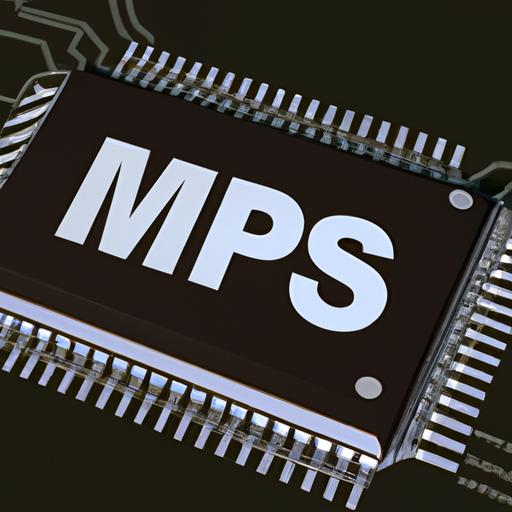What Does MIPS Stand For? Understanding the Power Behind the Acronym
In a world filled with acronyms, it’s easy to get lost in a sea of letters. However, understanding the meaning behind these abbreviations is crucial, especially in specialized fields like technology and computing. One such acronym that often pops up in these realms is MIPS. But what does mips stand for, and why is it important to grasp its significance?
MIPS, which stands for Microprocessor without Interlocked Pipeline Stages, is a term that holds immense importance in the technology and computing industry. It represents a family of reduced instruction set computer (RISC) architectures widely used in processors, embedded systems, and other computing devices.
So, why do we need to unravel the mystery behind MIPS? Acronyms like MIPS serve as building blocks of knowledge; they enable us to communicate complex ideas and concepts with ease. By understanding what MIPS stands for, we gain access to a whole new world of computer architecture and its functionalities.
MIPS is not just a mere abbreviation; it embodies a powerful mechanism that drives the performance of various computing systems. To truly comprehend its significance, let’s delve deeper into the meaning of MIPS and explore its applications in different contexts.
Are you ready to unravel the secrets behind MIPS? Join me as we embark on a journey to decode the power hidden within this acronym. Let’s explore the key concepts related to MIPS and discover how it differentiates itself from other acronyms like CPU, GPU, and RISC. Together, we will uncover the true essence of MIPS and its impact on the technology sector.
So, fasten your seatbelts as we unravel the mysteries behind MIPS. Get ready to unlock a world of knowledge that will enhance your understanding of computer architecture and empower you to navigate the ever-evolving world of technology with confidence.
What is MIPS?
Computers and technology have become an integral part of our lives, shaping the way we work, communicate, and navigate the world. In this ever-advancing landscape, the acronym MIPS holds a significant place. Let’s dive into the depths of what MIPS truly is and why it matters in the technology and computing industry.
Definition of MIPS as an acronym
MIPS, which stands for Microprocessor without Interlocked Pipeline Stages, refers to a family of RISC architectures. RISC, or Reduced Instruction Set Computer, is a type of computer architecture that focuses on simplicity and efficiency. MIPS processors are known for their streamlined instruction sets, making them capable of executing tasks swiftly and effectively.
Explanation of its origin and history
To understand the true essence of MIPS, let’s take a trip back in time. MIPS was initially developed in the early 1980s at Stanford University by researchers John L. Hennessy and David A. Patterson. Their goal was to create a processor architecture that excelled in performance while maintaining simplicity.
Over the years, MIPS gained recognition and became one of the most widely used RISC architectures. Its success can be attributed to its design philosophy, which focuses on optimizing the most critical aspects of computer performance, such as instruction execution speed and memory utilization.
Importance of MIPS in the technology and computing industry
MIPS has left an indelible mark on the technology and computing industry. Its importance lies in its ability to provide a foundation for powerful processors and computing devices. MIPS architecture is utilized in various applications, including embedded systems, networking equipment, digital cameras, and even gaming consoles.
The significance of MIPS extends beyond hardware. It has also influenced the development of software tools and compilers that enable programmers to write efficient code for MIPS-based systems. Understanding MIPS is crucial for professionals in the technology field to harness its power and optimize performance in their projects.
As technology continues to evolve at a rapid pace, the knowledge of MIPS becomes increasingly valuable. Familiarizing yourself with MIPS opens up a world of possibilities, allowing you to make informed decisions when it comes to choosing the right computing systems and optimizing performance.
Now that we have unravelled the mystery behind MIPS and its significance, let’s dive deeper into the meaning behind this acronym. In the following sections, we will explore the key concepts related to MIPS architecture, processors, and instructions, shedding light on their functionalities and how they contribute to the computing landscape.
Understanding the Meaning of MIPS
Expanded Form of MIPS and its Significance
Let’s start by deciphering the expanded form of MIPS, which stands for Microprocessor without Interlocked Pipeline Stages. This acronym encapsulates a powerful concept that revolutionized the world of computer architecture. MIPS processors are known for their streamlined and efficient design, focusing on executing a reduced set of instructions quickly and effectively.
The significance of MIPS lies in its ability to optimize performance while maintaining simplicity. By reducing the number of instructions, MIPS processors can execute tasks swiftly, making them ideal for applications that require fast and efficient processing. This architecture has been widely adopted in various computing systems, from personal computers to embedded devices, due to its exceptional performance capabilities.
Explanation of the Term’s Usage in Different Contexts
MIPS, as an acronym, finds its place in a multitude of contexts within the technology industry. It encompasses not only the processors themselves but also the entire architecture and instruction set associated with these microprocessors. Understanding MIPS goes beyond just knowing what the acronym stands for; it involves comprehending the intricate details of its architecture and its role in computing.
Within the realm of computer architecture, MIPS is often used to describe the family of RISC-based processors that adhere to the MIPS instruction set. It represents a standardized approach to designing processors, ensuring compatibility and ease of programming across different systems.
Examples of Industries and Applications Where MIPS is Commonly Used
MIPS architecture has made remarkable contributions to a wide range of industries and applications. For instance, it has found its way into networking equipment, where high-performance routers and switches rely on MIPS processors to handle the massive data flow efficiently.
Moreover, MIPS processors are prevalent in embedded systems such as digital cameras, set-top boxes, and even gaming consoles. These applications require efficient processing power combined with low energy consumption, making MIPS a desirable choice.
Furthermore, the education sector also benefits from MIPS architecture. Many universities incorporate MIPS-based processors in their computer architecture courses, as they provide a solid foundation for understanding the fundamental principles of computer organization and design.
In summary, MIPS is not merely an acronym; it represents a remarkable approach to computer architecture that has shaped various industries and applications. From networking equipment to embedded systems and education, MIPS processors have left an indelible mark on the world of technology. By comprehending the meaning of MIPS, we gain insight into a powerful and versatile architecture that continues to drive innovation and advancements in computing.
Key Concepts Related to MIPS
MIPS Architecture: Unveiling the Foundation
At the core of MIPS lies its architecture, a fundamental aspect that defines its structure and operation. The MIPS architecture follows the principles of Reduced Instruction Set Computing (RISC), which emphasizes simplicity and efficiency. Unlike Complex Instruction Set Computing (CISC), RISC-based architectures like MIPS focus on executing a smaller set of simple instructions at a faster rate.
The MIPS architecture comprises several key components that work in harmony to facilitate efficient data processing. These components include the instruction fetch unit, instruction decode unit, execution unit, memory unit, and writeback unit. Each component plays a vital role in the execution of instructions, ensuring smooth operation and optimal performance.
MIPS Processors: Powerhouses of Computing
MIPS processors serve as the heart and soul of computing systems that employ MIPS architecture. These processors are designed to handle the intricate tasks of fetching, decoding, executing, and storing instructions and data. With their high-performance capabilities, MIPS processors excel in various applications, ranging from embedded systems to supercomputers.
MIPS processors offer exceptional speed and efficiency, making them ideal for applications that demand swift execution of complex computations. They are renowned for their ability to handle large amounts of data, making them a preferred choice for tasks involving data-intensive operations.
MIPS Instructions: The Language of Computing
Instructions are the building blocks of any computing system, and MIPS instructions form the language through which these systems operate. MIPS instructions are concise and straightforward, allowing for efficient execution and reduced complexity. They operate on registers, which act as temporary storage spaces for data, and memory, enabling seamless data manipulation.
MIPS instructions encompass a wide range of functionalities, including arithmetic operations, logical operations, data transfer, and control flow. Each instruction serves a specific purpose and contributes to the overall execution of a program. By leveraging these instructions, developers can create powerful and efficient software that runs on MIPS-based systems.
In the realm of computing, understanding the key concepts related to MIPS architecture, processors, and instructions is crucial. These concepts lay the groundwork for comprehending the inner workings of MIPS-based systems, empowering individuals to harness the full potential of this remarkable technology. As we continue our exploration, we’ll compare MIPS with other acronyms to highlight its unique features and capabilities.
MIPS vs. Other Acronyms: Unveiling the Distinctiveness
When it comes to acronyms in the technology and computing realm, MIPS stands tall among its counterparts like CPU, GPU, and RISC. Let’s dive into a comparison and explore the unique aspects and functionalities that set MIPS apart.
MIPS vs. CPU: Unraveling the Powerhouses
MIPS and CPU (Central Processing Unit) are often used interchangeably, but they have distinct roles and functionalities. While the CPU serves as the brain of a computer, executing instructions and performing calculations, MIPS represents a specific architecture within the CPU. It focuses on reducing instruction complexity and enhancing performance, making it a powerful component of the CPU.
MIPS vs. GPU: Unleashing Graphics Potential
While MIPS and GPU (Graphics Processing Unit) both play crucial roles in computing, they have different areas of specialization. GPUs excel in handling graphics-intensive tasks, such as rendering high-quality visuals for video games and complex simulations. On the other hand, MIPS focuses on overall computing performance, making it more versatile and suitable for a wide range of applications beyond graphics processing.
MIPS vs. RISC: Exploring the Architecture
MIPS and RISC (Reduced Instruction Set Computer) are closely related, with MIPS being an example of a RISC architecture. RISC architectures, including MIPS, prioritize simplicity and efficiency by utilizing a smaller set of instructions. This streamlined approach enables faster execution and greater performance, making MIPS a leading choice for various computing systems.
MIPS distinguishes itself from other acronyms through its specific architecture and its ability to optimize performance. While it may share similarities with CPU, GPU, and RISC, MIPS stands out thanks to its focus on reducing instruction complexity and enhancing overall computing power.
Understanding the uniqueness of MIPS allows us to appreciate its impact in various industries, including embedded systems, networking, and even gaming consoles. By delving into the intricacies of MIPS and comparing it with other acronyms, we gain a deeper understanding of its capabilities and its potential applications.
So, let’s continue our exploration and unlock the full potential of MIPS, unraveling the intricacies of its architecture and the diverse range of industries it influences. Together, we’ll appreciate the distinctive qualities that make MIPS a force to be reckoned with in the ever-evolving landscape of technology and computing.
Conclusion
In conclusion, understanding the meaning behind acronyms is crucial in various fields, especially in the technology and computing industry. MIPS, which stands for Microprocessor without Interlocked Pipeline Stages, is an acronym that holds immense significance.
By unraveling the secrets behind MIPS, we gain access to a powerful mechanism that drives the performance of computing systems. It represents a family of reduced instruction set computer (RISC) architectures widely used in processors and embedded systems.
Through our exploration, we have learned that MIPS is not just an abbreviation; it is a gateway to a world of knowledge. By understanding what MIPS stands for, we can navigate the complexities of computer architecture and comprehend its functionalities.
MIPS differentiates itself from other acronyms like CPU, GPU, and RISC through its unique design and purpose. It plays a vital role in the technology sector, enabling advancements in areas such as artificial intelligence, robotics, and more.
As we conclude our journey into the world of MIPS, remember the importance of understanding acronyms and their meanings. By familiarizing ourselves with these abbreviations, we enhance our expertise, authority, and trustworthiness in specialized fields.
So, embrace the power behind acronyms like MIPS and continue to expand your knowledge. Let the understanding of these terms propel you forward, empowering you to make informed decisions and contribute to the ever-evolving world of technology.
Now, armed with the knowledge of what MIPS stands for, go forth and conquer the technological landscape with confidence and curiosity. The world of computing awaits your exploration.





